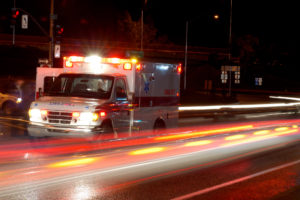
In the last two years alone, Occupational Safety and Health Administration (OSHA) examined 40 skylight accidents across the United States. Of those, 34 caused fatal injuries. When it comes to commercial buildings, the aesthetically pleasing features aren’t automatically reliable. Take skylights, for example. People appreciate them because they let lots of natural light into an area and look beautiful.
However, skylights can break, leak, and are not precisely energy-efficient, and they are sometimes dangerous. If a family member was injured in a skylight accident, it’s essential to know ahead of time that they shouldn’t take the blame for the accident. A commercial building accident attorney can help determine the options for legal recourse.
You may be wondering what types of injuries stem from the increased use of skylights in construction? You should know that fall hazards can cause catastrophic injuries or even be fatal. After falling 21 feet or more through a skylight, usually to a concrete surface, someone can suffer severe trauma, such as traumatic head and chest injuries. Sometimes, the fall impact is so extreme that death occurs immediately or shortly after.
To prevent injury from crashing through skylights, building owners must adhere to building safety rules and regulations that require them to ensure they are not exposing workers or visitors to hazardous situations. They also need to abide by current OSHA standards that require building owners and employees to guard skylights.
Falling through a skylight is more dangerous and occurs more frequently than you might realize. Injuries can happen to anyone when skylights break and collapse.
Skylights cause catastrophic injuries when someone – usually a worker – collapses with them. However, when the glass and plastic break and fall, these components can injure victims below inside the construction.
Constructors make most skylights from glass, acrylic, or other plastic materials. When they are new, these materials are robust and can face significant impact and pressure. However, over the years, the sunlight’s ultraviolet radiation, strong winds, and pressure deteriorate the components. Thus, the skylight can become friable and lose its impact strength. In general, it’s the building owner’s responsibility to ensure the skylights are up to the safety code.
In these conditions, accidents occur when someone walks across the skylight, stumbles and falls, rests, or leans on it. Construction workers doing repairs, installations, or inspections are the notorious victims of collapse accidents. However, casualties of skylight falls could likewise be the owners or visitors that casually use the roof.
Also, skylights that look like a window can integrate too seamlessly with the stable roof. Although discreet and appealing, they can become dangerous when they can’t be detected, for example, when the roof is covered in snow.
Furthermore, many people don’t know that manufacturers do not produce most skylights to sustain the weight of a human being, and especially not when they’re leaning or falling, and, therefore, may not take safety precautions.
Thank you to our friends and contributors at The Law Offices of Sean M. Cleary for their insight into skylight accidents and injuries.


